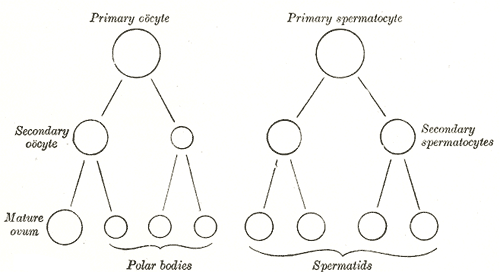Spermatid
|
WikiDoc Resources for Spermatid |
|
Articles |
|---|
|
Most recent articles on Spermatid |
|
Media |
|
Evidence Based Medicine |
|
Clinical Trials |
|
Ongoing Trials on Spermatid at Clinical Trials.gov Clinical Trials on Spermatid at Google
|
|
Guidelines / Policies / Govt |
|
US National Guidelines Clearinghouse on Spermatid
|
|
Books |
|
News |
|
Commentary |
|
Definitions |
|
Patient Resources / Community |
|
Patient resources on Spermatid Discussion groups on Spermatid Directions to Hospitals Treating Spermatid Risk calculators and risk factors for Spermatid
|
|
Healthcare Provider Resources |
|
Causes & Risk Factors for Spermatid |
|
Continuing Medical Education (CME) |
|
International |
|
|
|
Business |
|
Experimental / Informatics |
Overview
The term spermatid refers to the haploid male gametid that results from division of secondary spermatocytes. As a result of meiosis, each spermatid contains only half of the genetic material present in the original primary spermatocyte.
Spermatids are connected together by cytoplasmic material and have superfluous cytoplasmic material around their nuclei.
When formed, early round spermatids must undergo further maturational events in order to develop into spermatozoa, a process termed spermiogenesis (also termed spermeteliosis).
The spermatids begin to grow a tail, develop a thickened mid-piece where the mitochondria become localised and form an acrosome. Spermatid DNA also undergoes packaging, becoming highly condensed. The DNA is packaged firstly with specific nuclear basic proteins, which are subsequently replaced with protamines during spermatid elongation. The resultant tightly packed chromatin is transcriptionally inactive.
Additional images
-
Scheme showing analogies in the process of maturation of the ovum and the development of the spermatids (young spermatozoa).
External links
- Histology image: 17804loa – Histology Learning System at Boston University - "Male Reproductive System: testis, early spermatids"
- Histology image: 17805loa – Histology Learning System at Boston University - "Male Reproductive System: testis, late spermatids"
- Histology at okstate.edu
